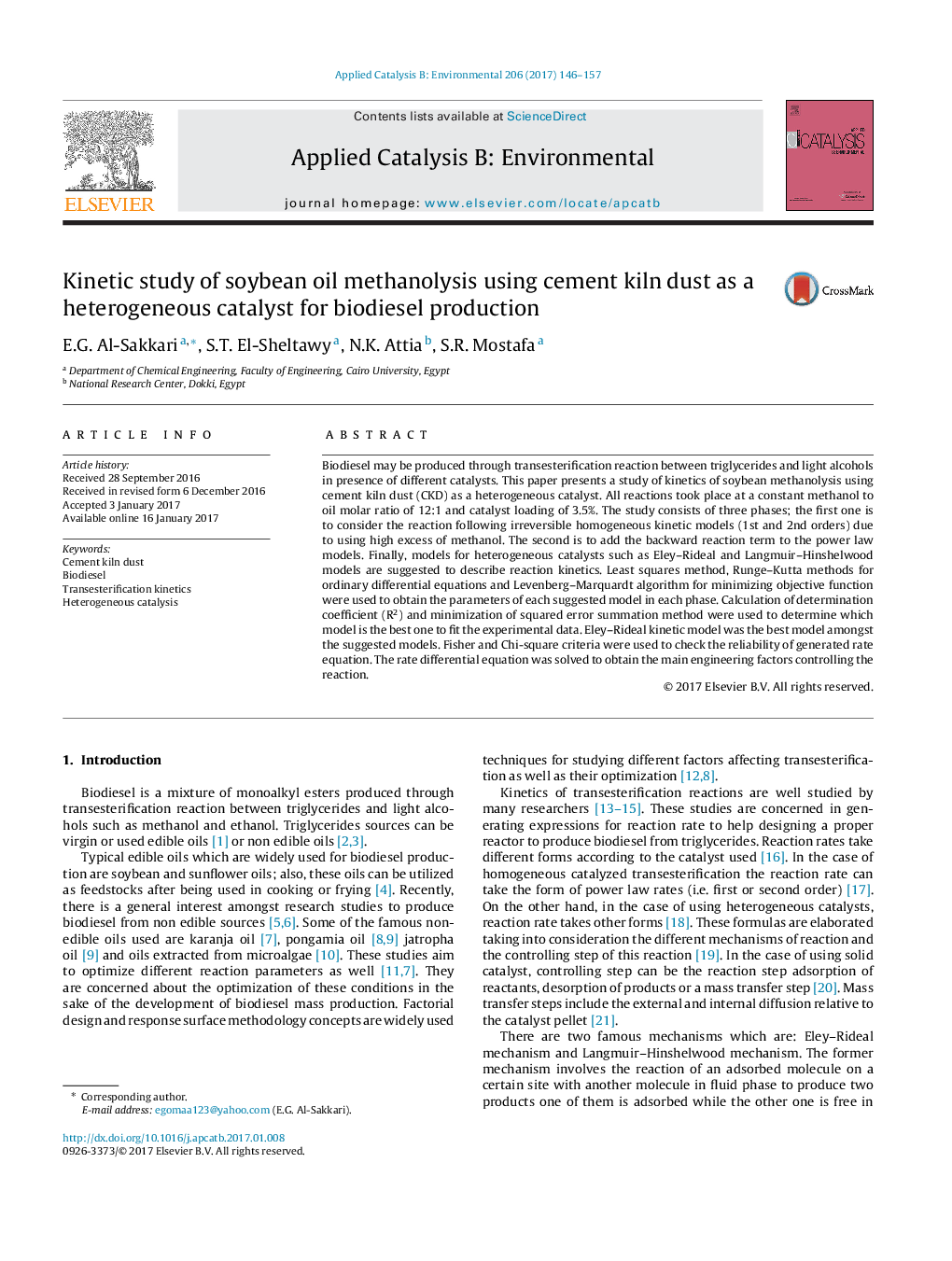| کد مقاله | کد نشریه | سال انتشار | مقاله انگلیسی | نسخه تمام متن |
|---|---|---|---|---|
| 6454654 | 1418814 | 2017 | 12 صفحه PDF | دانلود رایگان |
- Kinetic study of soybean oil transesterification using cement kiln dust as a heterogeneous catalyst.
- Cement kiln dust characterization.
- Selection of best kinetic model.
- Studying different mass transfer resistances during reaction to insure kinetically controlled reaction.
Biodiesel may be produced through transesterification reaction between triglycerides and light alcohols in presence of different catalysts. This paper presents a study of kinetics of soybean methanolysis using cement kiln dust (CKD) as a heterogeneous catalyst. All reactions took place at a constant methanol to oil molar ratio of 12:1 and catalyst loading of 3.5%. The study consists of three phases; the first one is to consider the reaction following irreversible homogeneous kinetic models (1st and 2nd orders) due to using high excess of methanol. The second is to add the backward reaction term to the power law models. Finally, models for heterogeneous catalysts such as Eley-Rideal and Langmuir-Hinshelwood models are suggested to describe reaction kinetics. Least squares method, Runge-Kutta methods for ordinary differential equations and Levenberg-Marquardt algorithm for minimizing objective function were used to obtain the parameters of each suggested model in each phase. Calculation of determination coefficient (R2) and minimization of squared error summation method were used to determine which model is the best one to fit the experimental data. Eley-Rideal kinetic model was the best model amongst the suggested models. Fisher and Chi-square criteria were used to check the reliability of generated rate equation. The rate differential equation was solved to obtain the main engineering factors controlling the reaction.
96
Journal: Applied Catalysis B: Environmental - Volume 206, 5 June 2017, Pages 146-157
